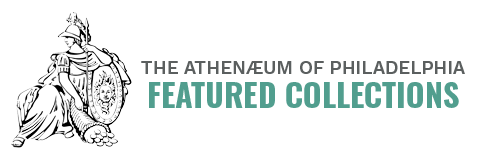Metadata
Title
Biddle, Nicholas (1786-1844)
Creator
Circle of Thomas Sully
Description
Legislator and financier Nicholas Biddle (1786-1844) was a member of the prominent Biddle family of Philadelphia, whose ancestors came to America with William Penn. A child prodigy, Biddle graduated from Princeton at the age of 15. He spent several years traveling throughout Europe, and served as secretary to James Monroe, then the US minister to Great Britain. Upon returning to the United States in 1807, Biddle practiced law, edited the literary magazine Port Folio, and helped edit the Lewis and Clark expedition journals for publication.
Biddle belonged to many Philadelphia civic organizations, among them: the Athenaeum of Philadelphia (which he helped found in 1814), the Pennsylvania Horticultural Society, and the Philadelphia Society for Promoting Agriculture. Additionally, Biddle served as President of the Girard College Board of Trustees and was instrumental in fulfilling Stephen Girard’s vision of building a school for poor orphaned boys.
As a member of the Pennsylvania General Assembly, Biddle advocated for the reestablishment of a national bank. In 1816, the second Bank of the United States was chartered, and in 1819, Monroe, now president of the United States, appointed Biddle to the board of directors of the Bank. In 1822 Biddle became president of the Bank, serving in that role until 1839, when it became increasingly clear that President Andrew Jackson’s refusal to renew the Bank’s charter all but guaranteed the Bank’s failure. The Bank ultimately closed in 1841.
Throughout his career, Biddle often took respite at his country residence known as Andalusia. In 1811 Biddle had married Jane Craig, and in 1814 obtained her parents’ large house located 14 miles north of Philadelphia overlooking the Delaware River. He commissioned architect Thomas Ustick Walter (who had designed Girard College) to transform the existing Craig house into a Greek Revival masterpiece. Biddle applied his lifelong interest in the arts, architecture, and experimental agriculture to develop the home and gardens into a stately and serene estate. Today, Andalusia is a National Historic Landmark open to visitors.
Nicholas Biddle died at Andalusia in 1844 at the age of 58.
Biddle belonged to many Philadelphia civic organizations, among them: the Athenaeum of Philadelphia (which he helped found in 1814), the Pennsylvania Horticultural Society, and the Philadelphia Society for Promoting Agriculture. Additionally, Biddle served as President of the Girard College Board of Trustees and was instrumental in fulfilling Stephen Girard’s vision of building a school for poor orphaned boys.
As a member of the Pennsylvania General Assembly, Biddle advocated for the reestablishment of a national bank. In 1816, the second Bank of the United States was chartered, and in 1819, Monroe, now president of the United States, appointed Biddle to the board of directors of the Bank. In 1822 Biddle became president of the Bank, serving in that role until 1839, when it became increasingly clear that President Andrew Jackson’s refusal to renew the Bank’s charter all but guaranteed the Bank’s failure. The Bank ultimately closed in 1841.
Throughout his career, Biddle often took respite at his country residence known as Andalusia. In 1811 Biddle had married Jane Craig, and in 1814 obtained her parents’ large house located 14 miles north of Philadelphia overlooking the Delaware River. He commissioned architect Thomas Ustick Walter (who had designed Girard College) to transform the existing Craig house into a Greek Revival masterpiece. Biddle applied his lifelong interest in the arts, architecture, and experimental agriculture to develop the home and gardens into a stately and serene estate. Today, Andalusia is a National Historic Landmark open to visitors.
Nicholas Biddle died at Andalusia in 1844 at the age of 58.
Extent
31"x27"
Medium
Oil on canvas; gilt frame
Provenance
Gift of The Philadelphia Society for Promoting Agriculture
Collection
General Collection, Museum Collection, The Athenaeum of Philadelphia
Identifier
2018.11.01
Rights
http://www.philaathenaeum.org/rights.html
